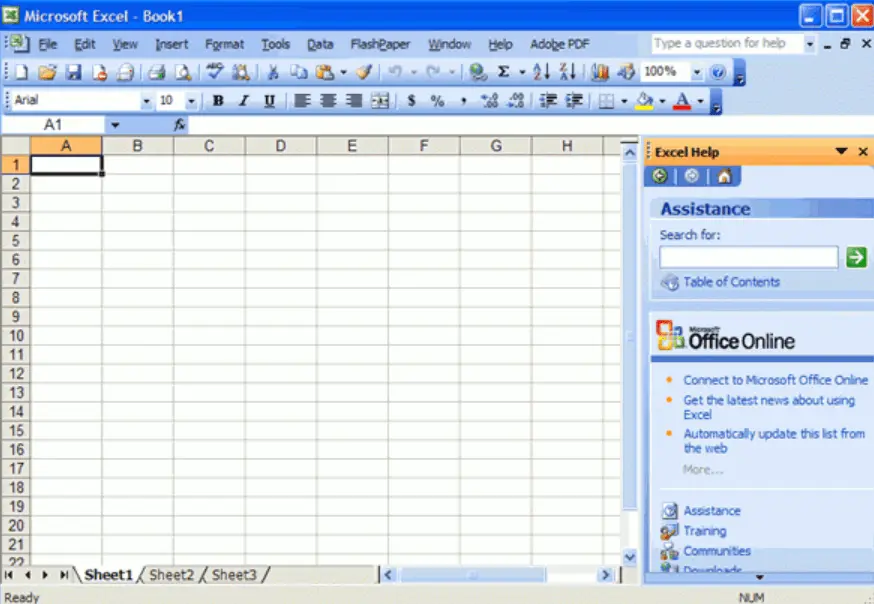Why did UI’s turn from practical to form over function?
E.g. Office 2003 vs Microsoft 365

It’s easy to remember where everything is with a toolbar and menu bar, which allows access to any option in one click and hold move.

Seriously? Big ribbon and massive padding wasting space, as well as the ribbon being clunky to use.
Why did this happen?
Funny story, before they did the 2007 redesigns, they asked users what they wanted to be added; 95% said features that were already in Office.
The Ribbon was designed to make features more findable.
Alas.
I’ve used Office 2003, 2007, 2010 etc. all the way up to 365 not for work purposes, but just happened to have interacted with all of the versions.
I have to say, I seriously don’t know what happened, but Office 2003-2007 feels the most stable and least clunky versions of Office (at least Word) in terms of basic word processing.
I learned how to properly edit and format text in Word in university in a way that I could, without fail, reproduce almost any text design you could think of. When I was learning it on Office 2007 I believe, everything was so stable and predictable. Now when somebody asks me to format some text with 365, the styles functionality continually keeps bugging out and doing stupid shit that I basically can’t recover from unless I create a blank file.
In conclusion, Office 2007 > 365
/rant
Same, but for Excel.
Also, JFC the save menu in Office 365 is Cthulhu-level madness.
Can you tell me more about that save menu?
the windows save menu has remained mostly the same since win3. Office products used the regular windows save menu for ages. Then suddenly they introduce a monstrosity that takes up the whole screen and throws decades of useful design out the window. If i describe it further I shall descend into madness
The ribbon is one thing, the flat design and obfuscating tools/settings are a far bigger issue.
Why did this happen?
The cynical but probably truer than we’d like to admit answer is “middle managers who bring nothing to the table but need to ‘make big changes’ to justify that promotion they’ve been chasing.”
Source: Pretty much all corporations at this point have these people, my sister’s ex-husband is one at Google.
Change for the sake of change is so dumb. I’m tired of pointless UI changes every so many years because some middle manager and their designers need to wow some dumb exec to get a promotion and they do so just by rearranging all the existing functionality because the product itself is already a complete solution that doesn’t actually need a new version. Sadly, this mentality even creeps into FOSS spaces. Canonical and Ubuntu wanting to reinvent the wheel with Unity, Mir, Snap, etc. GNOME radically changing their UI all the time.
Gnome does not radically change their design all the time.
The last time they did that was Gnome 3, which came out 13 years ago.
And you may think it was change for the sake of change, but I’d disagree. The workflow is amazing. Using anything else just feels clunky to me now.
The changes made in Gnome were based on UX usability studies, not just changing shit for the sake of changing it.
You’re mistaking your dislike of Gnome not operating like a traditional windows-like UX for it being objectively bad.
To be fair to the Open Source community, Canonical is a private company, and so it’s not really a shocker that they keep promoting bullshit tied to their own ecosystem. Especially with someone like Mark Shuttleworth involved, he was one of the early rich out of touch space tourists, long before Bezos looked like an idiot coming back from space. The profit motive always infects everything it touches.
This is so true of so many companies nowadays. The fact of the matter is that the big leaps in profit/efficiency/effectivness have basically all happened in most of these industries and so often people are pressed to make these sweeping changes because there isn’t any real way to improve on a system like this.
Reading Ed Zitron’s coverage of the Google antitrust cases is pretty eye opening.
Mostly because it says basically what you just said: we’ve already reached pretty much peak efficiency in these forms, and since they can’t bleed out more money via “efficiency” they’re now leaning towards “How many customers can I piss off while increasing ad interactions by 1%?” As Zitron points out, they’re literally chasing tiny percentage points of growth through “how many people can we piss off and still grow?” instead of offering anything new and useful. It’s just “we’re entrenched, so why would we try anything risky at all ever?” all the way down.
Corpos are down voting you because their butts hurt. You are right.
I love Ed. He is a fantastic writer.
Weirdly as someone who has used both styles heavily, I’d say the ribbon is more practical than the old toolbars. There’s more contextual grouping and more functional given the tabs and search, plus the modern flat design is less distracting, which is what I’d want from a productivity application. Also for me two rows of toolbars & a menu is about the same height as the ribbon anyway, and you can collapse the ribbon if you want to use the space
Yeah, does anyone else remember the menu bars that would show up and disappear depending on what you were doing? Those were awful–the ribbon method of context-specific tabs is better (IMO).
I remember people being upset by the ribbon back when office 2007 was released. Their complaints made sense until I sat down and used it. Found it to be a great improvement. I switched my libre office to the ribbon layout as soon as they added it. Because I don’t use it often, it’s great for finding stuff compared to looking through the menus.
The nice thing about the LO implementation is also that they added a couple of varieties of the design, like the compact one which pushes things closer together so it’s not distracting.
Flat design may be less distracting to you but that also means it’s less clear, because there are fewer obvious demarcation.
I despise flat design, it’s downright awful design, and done for looks rather than functionality.
Even saying it’s “less distractive” supports this.
Microsoft also did this to obfuscate features, which is pretty apparent when you consider new users used to “discover” features via the menu system. I supported Office for MS in the early days, and this was a huge thing at the time. It was discussed heavily when training on new versions.
Flat design may be less distracting to you but that also means it’s less clear, because there are fewer obvious demarcation.
I despise flat design, it’s downright awful design, and done for looks rather than functionality.
to you
Flat design dominates for a reason—the less visually busy something is, the easier it is for users to wrap their heads around it. This gets proven again and again in user studies, the more busy and dense you make things, the more users miss stuff and get lost.
People’s opinions on the ribbon specifically are obviously all subjective, but I would say the less distracting design would be the one done less for looks, rather it’s a pretty utilitarian design if you pick it apart. This is an interface for productivity tools, and as such the interface should get out of your way until you need it—the ribbon just does that better IMO.
Microsoft also did this to obfuscate features, which is pretty apparent when you consider new users used to “discover” features via the menu system. I supported Office for MS in the early days, and this was a huge thing at the time. It was discussed heavily when training on new versions.
Why on earth would Microsoft want to obfuscate features? There’s no way that motivation would ever make sense.
IIRC one of the main reasons Microsoft introduced the ribbon was that grouping functionality contextually helped users discover features, because people kept requesting features that already existed, but they just couldn’t find. I remember there being a blog on the Microsoft developer site about the making of it that went into this.
How many UI/UX usability studies have you done yourself. Links to results.
Since when is it not okay to have an opinion on how you’d like your computer to work? You’re saying it as if usability was an objective truth, not a preference of majority of users. People are different, everyone is talking about neurodiversity, and you’re saying that loving lowest common denominator UIs are the only acceptable opinion in the light of objective facts.
I’m so tired of neck beards assuming that any spacing in a design is a waste, as if a good design packs every milimeter with stuff. Proper application of negative space is common in art and throughout design.
Almost like Microsoft did a tremendous amount of user research aimed at improving the accessibility of the most commonly used features. I don’t use their products much, but the design has definitely improved over the years and extra padding is a big part of it.
The design has absolutely not “definitely” improved.
You are among the first people I’ve seen online who hasn’t circlejerked about literally any level of padding/spacing being too much padding.
People on Reddit/Lemmy always talk about how unusably shit any modern design is, and how UX/UI from 20+ years ago was so much better.
Yet do people use ancient copies of the software that broadly still performs the tasks people need of them? No.
Do they theme their system to look like the oh-so-superior Win98? No.
Don’t get me wrong, sometimes I see a design change I dislike. But as a general rule, UI has definitely got better over the years.
And don’t get me wrong, part of me feels great nostalgia at seeing old UX’s, because it reminds me of the “good old days” when I bought my first computer in 1999. It’s fun to Go back and use systems from back then. And at first you think AAAAA this is so cool, I remember all this, this looks neat, but after that nostalgia wears off you think *“thank god modern UIs aren’t inconsistent, cramped and cluttered like this”
Nostalgia goggles are a powerful thing.
People spend lots of money to buy big screens, only for apps/websites to use a fraction of it.
I cannot control how every application or website I have to use looks, but where I can, I try to find solutions.
When I am occasionally on reddit, I use old.reddit. I use addons for youtube, to remove unecessary stuff, or open videos directly in mpv.
I use reader mode to make many sites easier to navigate.
Mastodon and Lemmy have a much better design than Twitter or new Reddit.
On the one windows machine I still have, I use the classic shell, to replace the start menu with something more usable.
I use Libreoffice, and many other Software with sane functional UI.
I don’t want to use old software, because the older software gets, the more hostile the environment becomes for it.
A lot of UI decisions on the Internet seem driven by the need to create empty spaces to put advertising into, and with adblocker it looks just bad.
For some, with only a small screen, wasted space means extra navigation to find hidden commands. A usability fail just so the app looks pretty. Also a symptom of “one UI fits all” just to save businesses money.
In my experience working with Designers for web and app design, they always had trouble with dynamic stuff at all levels, from program flow and elements which dynamically collapsed or expanded to using animation to illustrate things or call attention to something.
Don’t get me wrong, as a programmer I was like a toddler next to them when it came to even just awareness of all the concerns related to merelly visual organisation, not counting all sorts of other concerns in a visual design some of which I’m sure I’m even not aware exist. It’s just that when it came to dynamic elements their expertise was comparativelly non-existent.
Honestly I like ribbons quite a lot as a design framework and hell, even padding can improve the UX, it’s just a shame that neither of these elements have been used well in a decade.
Agreed. I’m sure if I was heads down in Excel for years beforehand it would be a significant downgrade, but as a casual user, making better use of some of the more advanced features became so, SO much easier with the Ribbon.
The old file menu was way more functional if you needed to be keyboard only.
In a world that loves to tout “efficiency” sprawling GUIs and mouse-click-everything has drastically reduced efficiency when a keyboard + shortcuts + macros are far more efficient.
The further we stray from the CLI the further we stray from God. CLI-nliness is next to Godliness.
Look to the atheist. He does not use the command line because he secretly believes. He does so because he knows it’s good.
Wow, I still use paint.net. My needs are pretty humble, and it still hits that sweet spot between MS Paint and Gimp.
I kinda remember those conversations, wasn’t there an issue back then that Microsoft had a patent on the ribbon ?
I prefer the ribbon. It makes everything easier to discover and use.
It’s also entirely configurable so i was able to tailor it specifically to my needs, even include button for my macro, logically grouped and not thrown together with no heads or tail in a “macro” submenu.
It also allows widgets with much richer informational content than menus.
The ribbon is also entirely keyboard navigable with visual hints. Which means you can use anything mouse free without having to remember rarely used shortcuts.
And if the ribbon takes too much space, and you can’t afford a better screen, you can hide and show it with ctrl-F1 or a click somewhere (probably).
It’s actually a much much better UX than menus and submenus and everything hidden and zero adaptability. At least for tools like the office apps with a bazillion functions.
Most copies of the ribbon are utter shit though because the people who copied didn’t understand the strength of the office ribbon and only copied the looks superficially.
It’s funny to see people still hung up on the ribbon 17 years later.
It’s because of people like you that we still use qwerty on row staggered keyboards from the mechanical typewriter era. ;)
What makes it even worse is that screens got wider and shorter, but the new designs use more vertical space than before, leaving even less height to do anything in.
My $300 32 inch IPS 16:9 monitor laughs hard at my old $2000 19 inch CRT.
If you are on a desktop, it’s insane how both cheap and good monitors have become.16:9 was pushed on us because it was cheaper to produce on mass for tv and pc. 16:9 was better for movies.
There are some monitors from just before this massive market manipulation and those have 16:10, sometimes with display port before hdmi was even mainstream.
Apple is actually one of the few companies to make the jump from 4:3 to 16:10 avoiding the 16:9 with very few exceptions.
To this day i see people work with old software designed for the area of more vertical screens but doing so on screens designed for movies.
Most people dont even understand what i mean when i explain this. But the good thing is my issue with it was considered a disability so they had to accommodate me with something more sensible.
Sorry long comments but this is a personal vice for me.
It seems easier to find things for users. Probably part of dumbing things down.
My mom went through this last week with Libre Office. She said she couldn’t find anything because the ribbons from Word weren’t there. I found the option and enabled it and she said that was much better.
Whereas, I use Word 365 on a daily basis but I still know where things are from the classic menus.
But users want big pictures and less words, less menus.
So UI designers have done that.
You see that in the change between Windows 7 and Windows 8 in heavy ways. More buttons and less menus.
I fucking hate the dumbing down, especially on servers.
I assume the extra padding was a function of touch screens becoming more prevalent since trying to hit the 2003 style buttons with a finger was not that easy, although I don’t remember offhand when touch first started becoming a thing in Windows so it might have happened the other way around. But either way it’s likely still a factor in why the ribbon with its extra padding has stuck around.
-
Larger click targets for touch screen users
-
Larger screens with higher resolutions, meaning less need for cramped UIs
-
Larger click targets for trackpad users, as the PC market moved from desktops with relatively precise mouse inputs to small, imprecise trackpads that laptops had
-
Usability studies showing people generally like padding and spacing in their UX (despite Reddit and Lemmy insisting it’s evil and everybody hates it)
-
Eh, I don’t hate the ribbon UI. It certainly looks a lot nicer than the old ones.
I think the biggest crime is that we went towards widescreens and kept all the menus and toolbars along the top.
Another issue is complexity. In a rush to sell yearly updates, more and more features are crammed in. Most of us only use a tiny fraction of them, but there they are on the screen just in case. For everyone.
You’re never going to make one UI that makes everyone happy. Most people just learn where the 20 buttons or so that they use are, and blank the rest from their mind. That’s the real reason the ribbon UI got hate. Their buttons moved.
I miss 07 jfc…
The ribbon is better than menus. They’re even customizable. And lots of non-Microsoft software uses ribbons, too.
Plus there’s a search function right at the top if you can’t find the option you’re looking for
Contrast is Satan to designers, because being able to distinguish the zones of a UI messes with their perfect colour blocking.
It’s not UI backsliding. It’s Microsoft being incompetent. I have no idea how they’re still in business, and astounded at their valuation. It seems like everything they manage to push out is just barely functioning











